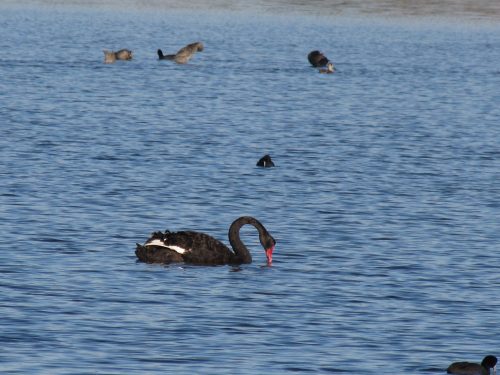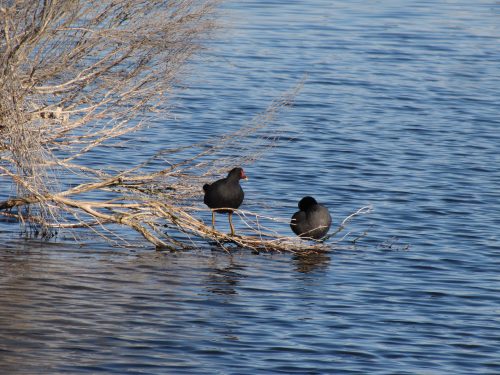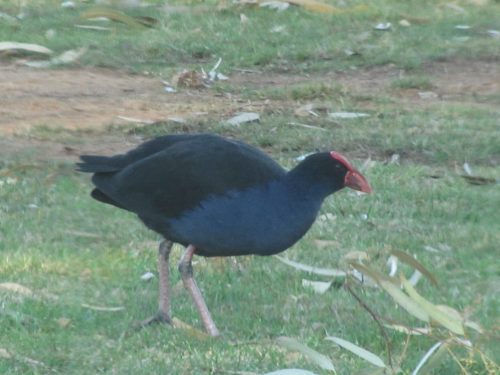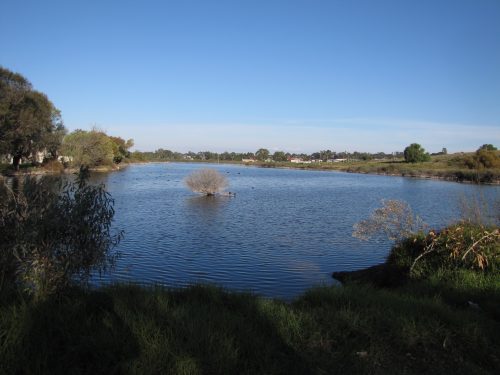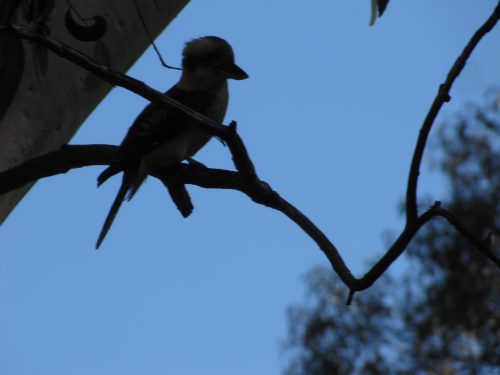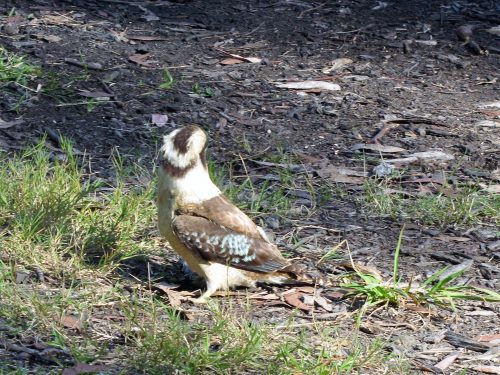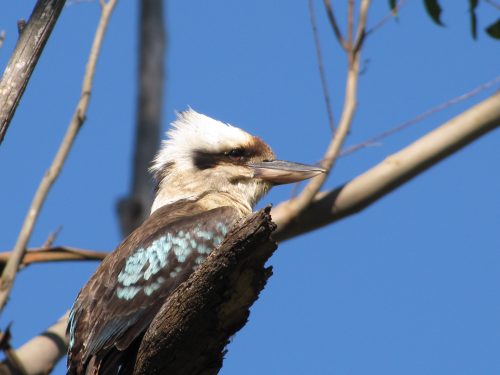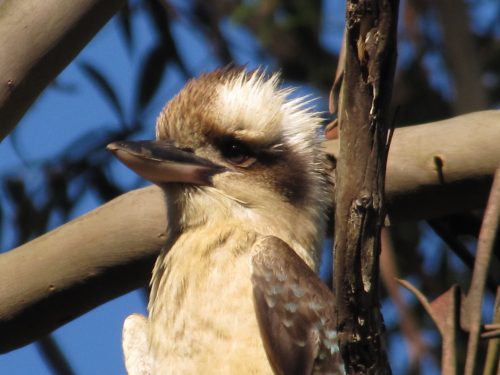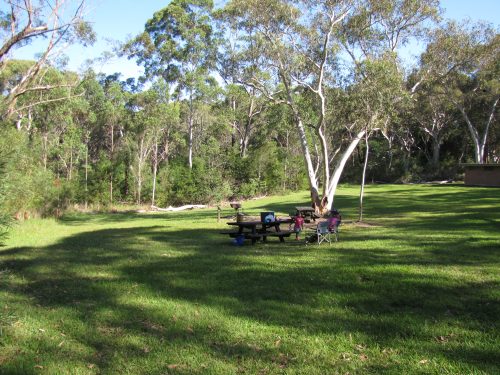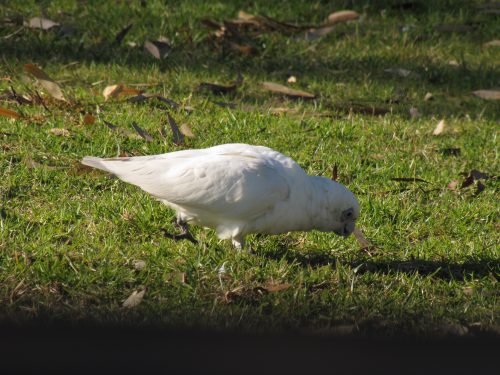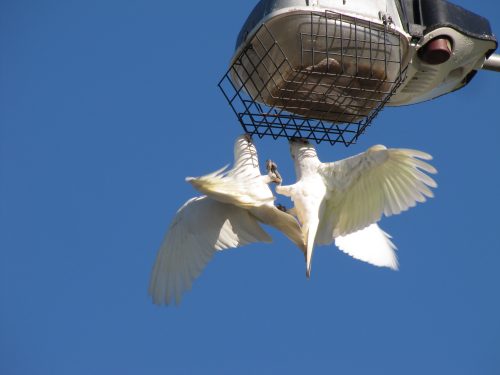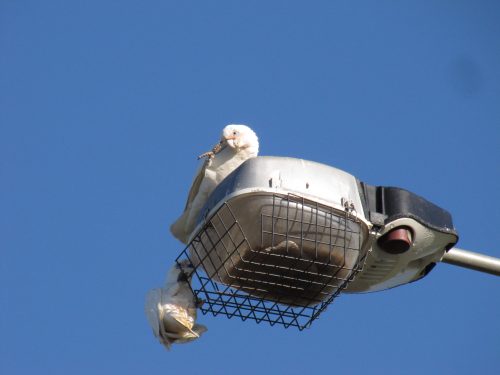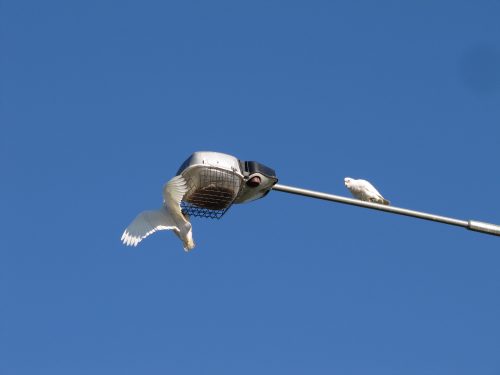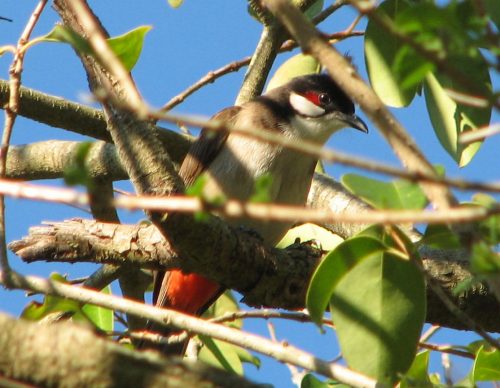Birding along the River Murray
A few weeks ago I participated in the Global Big Day. This was a special birding day held all over the world. Participants went out birding in their local patch. This could be your own garden, a nearby park, or a little further away. I decided to visit six of my favourite local birding sites, starting with my own garden. It was an interesting and relaxing afternoon. I visited several spots I had not been to in quite a while. Naturally, my camera came with me.
One of my birding sites was Sturt Reserve here in Murray Bridge, South Australia. This reserve, about five kilometres from my home, incorporates large grassed picnic areas along the River Murray. At this point, the river is quite wide and affords good views of quite a range of water birds, including ducks, coots, swamphens, cormorants, darters, pelicans and grebes.
The picnic areas have some old growth gum trees which are favoured spots for a range of parrots, cockatoos, honeyeaters and magpies. To the south of the reserve, there are several shallow lagoons. These generally fill up due to run-off from land nearby during rain. They would also be filled if the river ever flooded. There may even be a way for water to enter these lagoons directly from the river, but I am not aware if this actually happens.
These lagoons also attract a range of water birds. On my special day out birding, I saw Black Swans (see photo above).
As well as the swans I also recorded the following species:
- Pacific Black Ducks,
- Grey Teal,
- Pink-eared Ducks,
- Purple Swamphen
- Eurasian Coots
- Dusky Moorhen
- Black-winged Stilts
Please note that if you click on any of the above list of birds, it will take you to more articles and photos of those species.
Kookaburra Silhouette
On our recent visit to Sydney, we took our two grandchildren on a picnic to Lane Cove National Park. It is a short ten-minute drive from my son’s home. This park has also become one of our favourite picnic spots in Sydney.
Whenever I go to parks, especially national parks, I always take my binoculars and my camera. Spots like Lane Cove National Park always have a good range of birds to watch, and photograph. Because the children see me using my camera frequently, they often ask if they can take a few photos as well. Their ages are eight and five, so I let them use the camera. These days, they know how to handle my camera correctly. I think I have taught them well.
When my eight-year-old grandson was taking photos, he took the photo above. Many Australians, even if they are not birders, would easily recognise it as a Laughing Kookaburra. It is one of our most recognisable birds. My grandson has captured the bird well – good enough for this site, in my opinion. I love the silhouette effect.
My grandson also took the second photo (above) in this post. He has everything right: focus, composition, lighting – except that the bird is looking away! Sometimes you get everything just right – and other times one little thing doesn’t quite go to plan. Below are a few more photos I took that day.
Further reading:
Here are links to other picnics we enjoyed at the same spot:
Corellas: Villains of the Bird World
Birding time out
From time to time I take out a few minutes from my day to go birding. Sometimes these few minutes stretch into a few hours. I recently took off a whole afternoon. During this time, I visited six birding spots around my home town of Murray Bridge which is about an hour’s drive south-east from Adelaide.
Sturt Reserve
One of the spots I visited was Sturt Reserve. This lovely spot is on the banks of the Murray River. It is named after Captain Charles Sturt who explored the river in 1830. The reserve has large areas of lawn for picnics, a large playground and a restaurant. It also plays host to a wide variety of birds.
Little Corellas
On my recent visit, there were quite a few Little Corellas in the trees along the river. In flocks of 30 – 50 they can be annoyingly noisy. In recent years, these flocks have grown into the hundreds on many occasions. They are known to be high on the list of the Villains of the Bird World.
Havoc
In large flocks like one can see at Sturt Reserve – and other spots around the district – they can wreak havoc on trees, stripping leaves, twigs and bark from trees until little is left but for a carpet of gum leaves on the ground below. The nearby lawn-tennis courts have also been a target of these destructive birds. They have sometimes left the courts unusable after the sharp beaks of several hundred birds have visited. Various methods to disperse the flocks have been tried, but without much success. This is a widespread problem in many places in South Australia.
Large flock
Later, I drove a few kilometres to the southern edge of town to visit Swanport Reserve, also on the banks of the river. Here I witnessed flocks of several hundred corellas flying along the river and then out onto recently cultivated farmland across the river. Because of the distance, I was only able to estimate their numbers. After many smaller flocks had joined into one large flock, there must have been at least 1200 birds – possibly as many as 2000.
The photos below were taken at Sturt Reserve. They show the playfulness of some of the birds on the street lights. While I couldn’t see any damage to the lights from their beaks, they are quite capable of causing the local council some expensive headaches.
Further reading:
Red-whiskered Bulbuls in South Australia
In yesterday’s Advertiser paper here in South Australia, they featured a story about the recent reports of Red-whiskered Bulbuls. This is an introduced species from the India, and potentially a major pest species here in our state. It is a threat to several significant agricultural industries, including wine grapes, the citrus and strawberries.They are also a major threat to our native bird species.
I have known about some reports late last year from Mt Torrens in the Adelaide Hills region, one of our major fruit growing areas. More recently, the article claims that there has been a recent sighting in Eudunda, a mid-north town very close to the world-renowned wine growing region of the Clare Valley.
The article goes on to say that Biosecurity SA has spent $60,000 in their attempt to capture and destroy 10 known birds in the region. That seems a great price to pay for so few birds, but the threat to a 400 million dollar fruit industry is very real. There is a hefty fine for anyone releasing this species into the environment, a practice sometimes undertaken at weddings or anniversaries. Even keeping this species in captivity is banned here in South Australia.
There is an ever-present threat that some may inadvertently or deliberately be released here. The species is present in both the Melbourne and Sydney regions. The photo above was taken on a walk I did some years ago in Sydney. This was along the Flat Rock Creek to Middle Harbour walking track. The only other place I have seen this species was at the Australian Botanic Gardens at Mt Annan, also in the Sydney region.
I wanted to link to the article in The Advertiser but it is a restricted article; one needs to take out a digital subscription to the paper.
